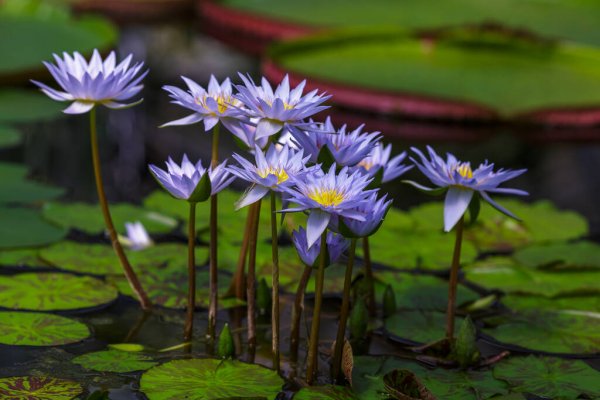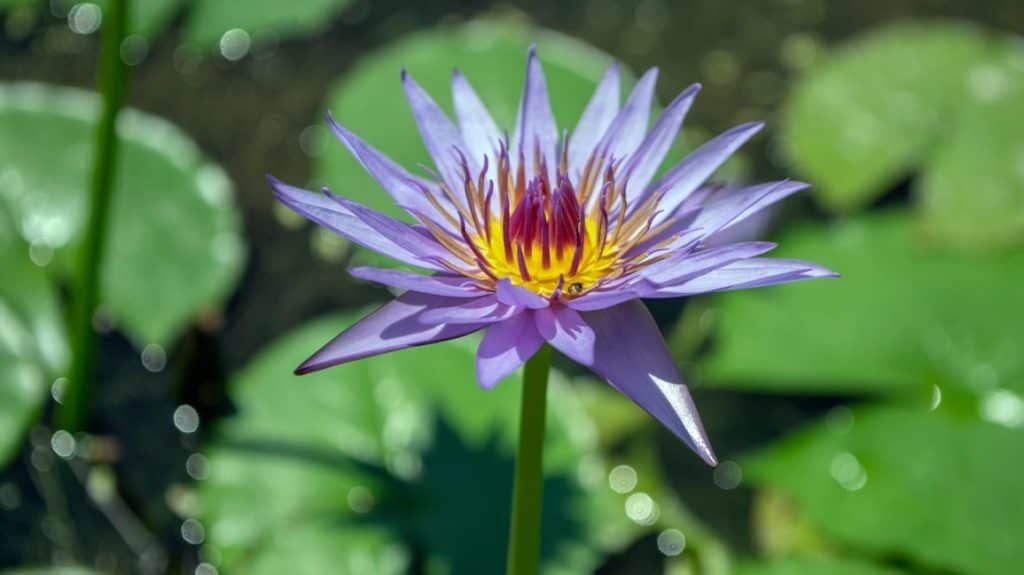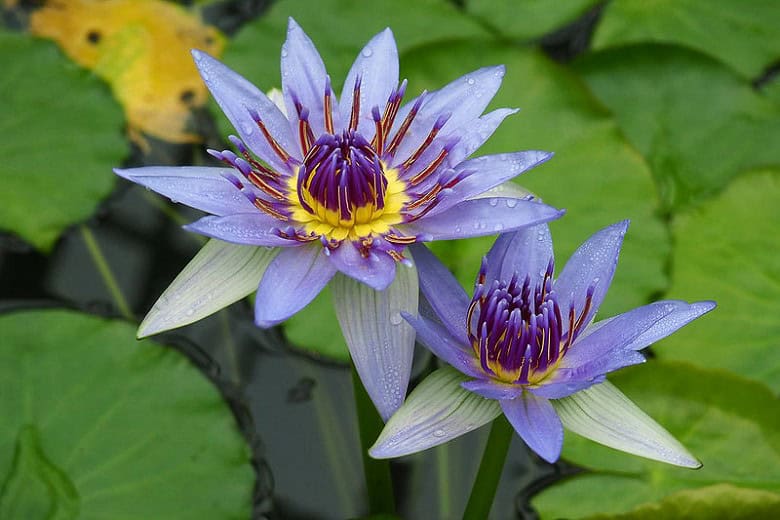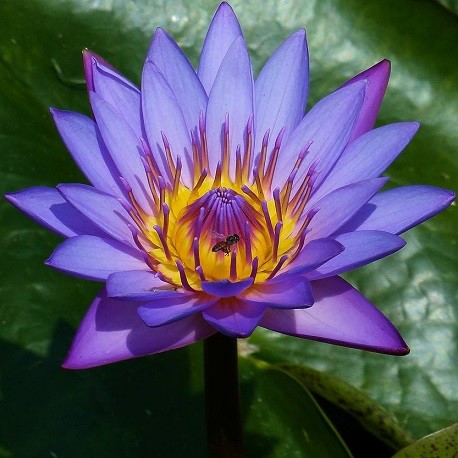Blue Lotus Flower
weed identification
Leaves 30-40cm in diameter with wavy margins and can alter form and texture depending on if under water or floating on the surface. Flowers can be blue, purple, white, mauve or pinkish in colour with a yellow centre and up to 15cm in diameter. Often mistaken for the native lily Nymphaea gigantean which poses no threats. Care should be taken when identifying to ensure the native lily is not interfered with.
The Blue Lotus flowers in summer and autumn.
Prefers slow moving water bodies such as ponds, dams, freshwater lakes, and wetlands.
Reproduces via seed or tubers.
Used as an ornamental plant, this weed has been distributed by improper disposal and care.
It has been used in traditional medicine for thousands of years as a natural aphrodisiac, sleep aid and anxiety reliever.
What does Blue Lotus Flower look like?
Disadvantages of Blue Lotus Flower
Full coverage of a pond or dam by Blue Lotus Flower can cause significant problems such as:
- Reduce oxygen diffusion
- Shades out all submerged vegetation preventing further growth and causing death
- Outcompete native vegetation
- Causes fish and other aquatic life death
- Provides breeding ground for mosquitos
- Changes the water chemistry to favour harmful algae and bacteria
- If left untreated, Blue Lotus Flower can render the water unusable and make treatment far more costly than if initially dealt with
treatment
AQ200 Aquatic Herbicide + Wetting Agent – Chemical Herbicide designed to kill free floating weeds quickly. Use on mild to severe infestations.
Aquatic Weed Rake – DIY physical removal. Ideal for mild infestations, sensitive water bodies or to aid herbicide treatment.
Aquatic Harvesting – Large amphibious machine that clears the surface of floating aquatic weeds. Book this service for severe infestations or for larger water bodies.
prevention options
Aerating Fountains – Reduces the severity and likelihood of aquatic weed infestations. Use in any body of water.







